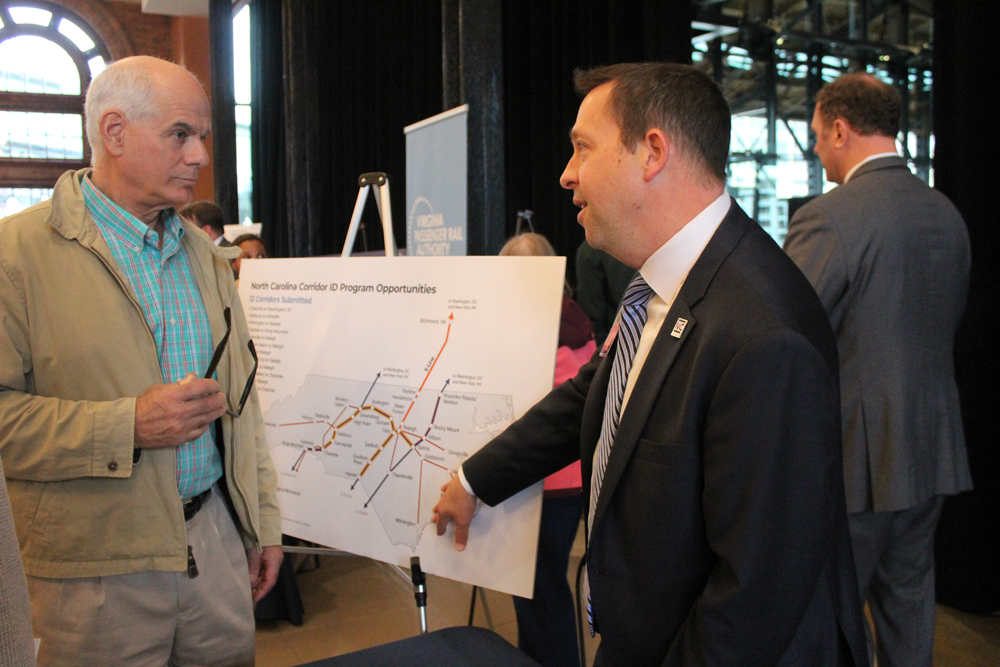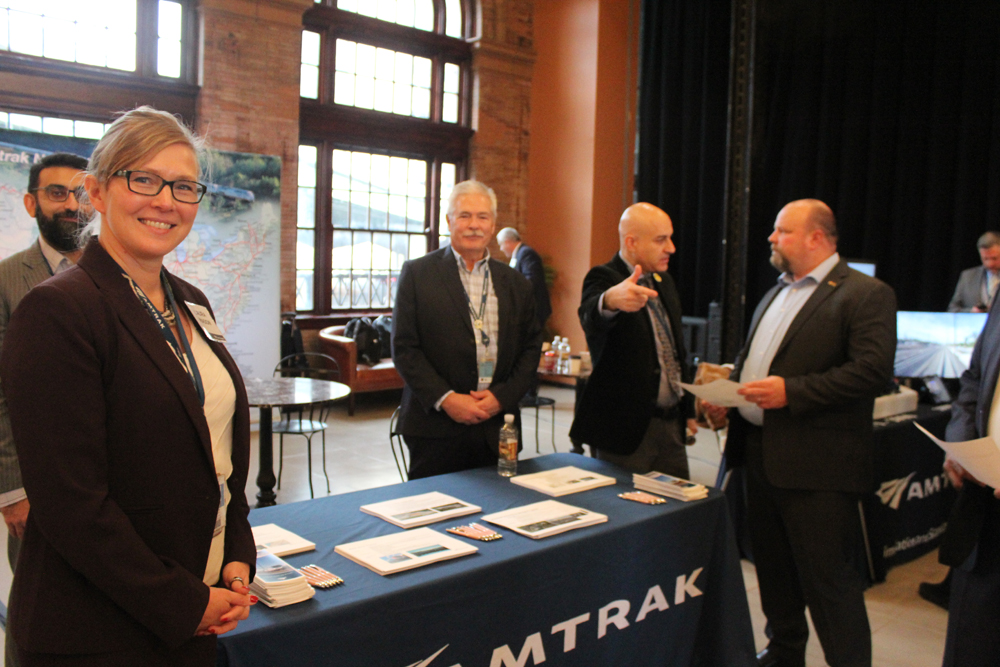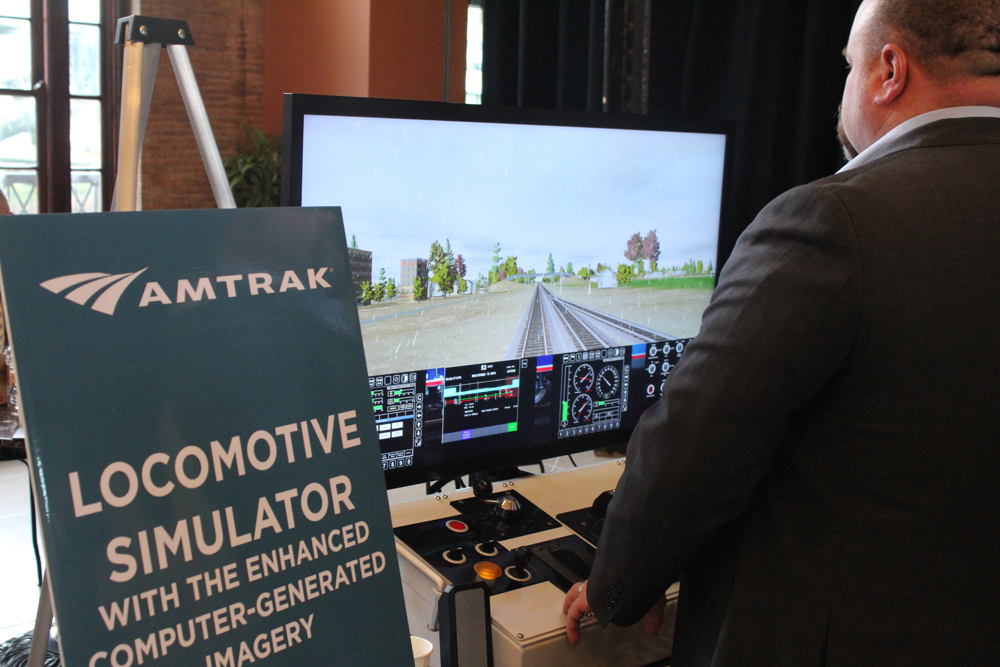
RICHMOND, Va. — Harking back to Amtrak’s yearly “National Train Day” events, the heads of various Amtrak departments and leaders of state passenger rail programs on Friday utilized the spacious halls of Richmond’s Main Street Station to explain capital investment, training, operations, and future goals.
The “expo” was held in connection with Amtrak’s annual public board meeting [see “Amtrak officials outline new goals …,” Trains News Wire, Dec. 2, 2023]. It began an hour before D.J. Statler, executive director of the Virginia Passenger Rail Authority, and Jason Orthner, director of the Rail Division of the North Carolina Department of Transportation, offered presentations that were live streamed in conjunction with the board meeting.
Both states are developing growth strategies that build upon already-robust operations. Orthner displayed a map of 12 routes for which North Carolina is seeking certification as part of the Federal Railroad Administration’s Corridor Identification and Development and Federal-State Partnership grant programs. The FRA is expected to announce awards within the next few weeks.
Virginia representatives also used maps to show how infrastructure improvements on the Richmond- Washington, D.C., corridor would lead to additional frequencies in 2026 through Main Street to Newport News, Va., and throughout the state by 2030 once a new “Long Bridge” over the Potomac River is constructed.

Their presence was augmented by Amtrak senior executives and their staffs, available to explain various company initiatives. Engineers in charge of capital-intensive engineering projects such as the Baltimore’s Frederick Douglass Tunnel and the now-funded Susquehanna River bridge answered questions from attendees.
A highlight was the locomotive simulator, one of more than two dozen units the company uses to augment vital in-cab locomotive training.
Amtrak CEO Stephen Gardner was available to explain that there are many scenarios to test: “What happens if an operator encounters a refrigerator on the tracks? The simulator allows so much more depth of training; if an engineer isn’t satisfied with the way he approaches a restrictive signal, he can try it again. You don’t get a ‘do over’ in real life.”
The public meeting’s proximity to the Washington, D.C., headquarters facilitated participation in the event; managers were able to make a convenient one-day round-trip. Board Chairman Tony Coscia said next year’s meeting is likely to be “out west,” but the Expo outreach is worth repeating.














